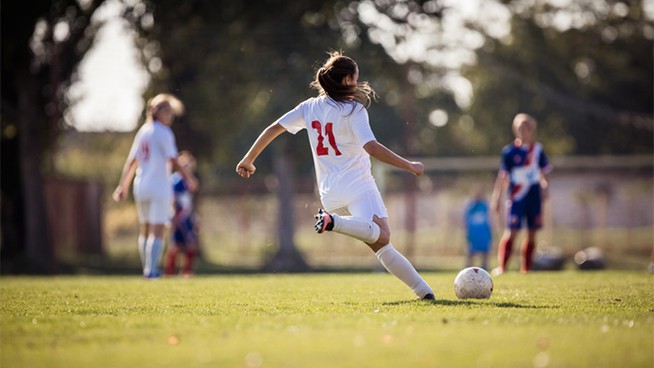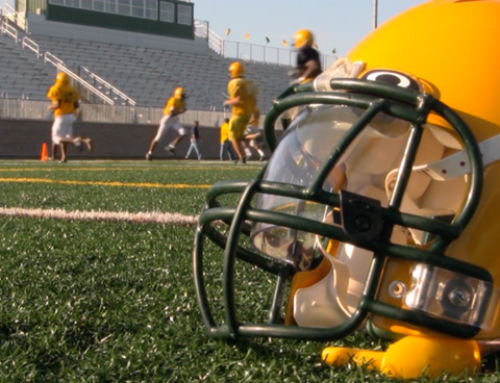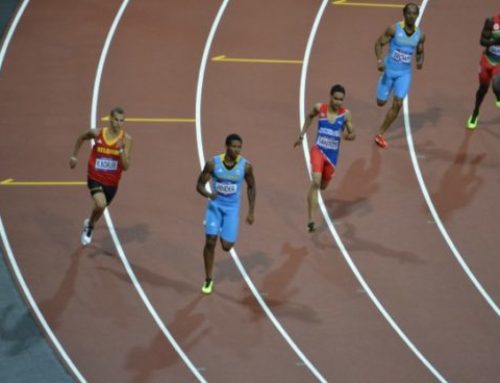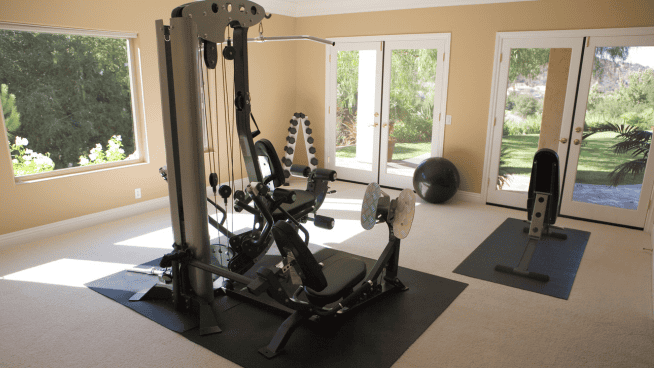3 Best Plyometric Exercises for Speed
Athletes can achieve top speed by maximizing their power production. When designed and implemented correctly, plyometric exercises is an effective and efficient way to increase the power produced in an athlete’s stride. However, not every plyometric drill is suited for speed training. As an athlete or strength coach, you must choose your exercises wisely and spend time and energy on the ones that will improve the attribute or skill you are focusing on. This will make every session more efficient and more valuable.
That being said, below are three of the best plyometric drills for speed development.
Best Plyometric Exercises for Speed
Depth Jumps to Standing Long Jumps
Sets/Reps: 3×5
The key to this drill is to make the transition from landing to long jump as quickly as possible. Your heel should not have time to make contact with the ground during the transition, reinforcing the action of putting the reaction movement into a horizontal plane conducive to sprinting.
- Start on a box or bench at least 12 inches above the ground
- Step off and land on two feet
- Upon landing, quickly execute a standing long jump as far as possible
Repetitive Standing Long Jumps
Sets/Distance: 3×20 yards
Coordination and drive are produced by both the lower body and the arm swing. This drill trains you to lessen your ground contact time while maintaining forward momentum.
- Perform a standard standing long jump; do not stop when landing
- Quickly transition to another standing long jump
- Keep continuously moving forward, staying on the balls of your feet, pushing off explosively
Forward Bounds
Sets/Distance: 3×20 yards
In this drill, you create forward momentum by alternating pushes that mimic the sprinting stride. Take long powerful strides and focus on driving off the ground with maximum power output. As you bound forward, maintain proper arm swing and body position. All foot contact should be on the balls of your feet. Maintain full backside extension and front side knee flexion through each push. This drill takes the concepts of force production and puts them in a sprint-specific movement pattern.
RECOMMENDED FOR YOU
3 Best Plyometric Exercises for Speed
Athletes can achieve top speed by maximizing their power production. When designed and implemented correctly, plyometric exercises is an effective and efficient way to increase the power produced in an athlete’s stride. However, not every plyometric drill is suited for speed training. As an athlete or strength coach, you must choose your exercises wisely and spend time and energy on the ones that will improve the attribute or skill you are focusing on. This will make every session more efficient and more valuable.
That being said, below are three of the best plyometric drills for speed development.
Best Plyometric Exercises for Speed
Depth Jumps to Standing Long Jumps
Sets/Reps: 3×5
The key to this drill is to make the transition from landing to long jump as quickly as possible. Your heel should not have time to make contact with the ground during the transition, reinforcing the action of putting the reaction movement into a horizontal plane conducive to sprinting.
- Start on a box or bench at least 12 inches above the ground
- Step off and land on two feet
- Upon landing, quickly execute a standing long jump as far as possible
Repetitive Standing Long Jumps
Sets/Distance: 3×20 yards
Coordination and drive are produced by both the lower body and the arm swing. This drill trains you to lessen your ground contact time while maintaining forward momentum.
- Perform a standard standing long jump; do not stop when landing
- Quickly transition to another standing long jump
- Keep continuously moving forward, staying on the balls of your feet, pushing off explosively
Forward Bounds
Sets/Distance: 3×20 yards
In this drill, you create forward momentum by alternating pushes that mimic the sprinting stride. Take long powerful strides and focus on driving off the ground with maximum power output. As you bound forward, maintain proper arm swing and body position. All foot contact should be on the balls of your feet. Maintain full backside extension and front side knee flexion through each push. This drill takes the concepts of force production and puts them in a sprint-specific movement pattern.










